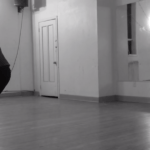
Yoga, Cults, Neurodivergence, Structural Sexism: Tiffany Rose and Matthew Remski in Conversation
February 9, 2019
Contact Dancing with Karen Rain
March 4, 2019It will soon be a matter of common knowledge that the integrity of globally successful yoga and Buddhism brands founded by charismatic evangelists have been grossly compromised by histories of abuse.
We don’t have to name names: they’ll just come to mind. Fill in the blank of “The ______ yoga community”, and you will likely have named an organization in which the leader and/or his/her key lieutenants have been abusers.
In some cases the relationship seems to express a morbid calculus: the more abusive the leadership, the more successful the organization.
The jury is out on whether abuse prevalence is higher in globalized-Indian-convert-spirituality groups than in other groups. But we can say that in a completely unregulated landscape confounded by idealization and orientalism in which charisma is the primary coin of the realm and consumers have little if any way of assessing the competency of producers — even in matters as tender as their own bodies, psyches, and inner selves — abuse is easy to pull off and devastating in effects.
Understanding how the abuse works systemically is impossible, IMO, without diving into cult studies, which provide a robust framework for how the behaviours, information, thoughts, and emotions of group members are controlled (cf Hassan) through the manipulating strategies and deceive and negate the self (cf. Mann).
When (not if) this analysis becomes normalized, the notion that these brands and their communities “protect” a particular kind of knowledge — a language that’s emboldened by references to “tradition” or “lineage” — will start to ring hollow. It will become clear that the shadow function of the organization has been at least dual. Aside from the good the organization has done, it has used the notion of
- Protecting proprietary/precious information to…
- Protect the image of the abusers said to hold it.
The vehemence of those who protect “purity” seems to rise in direct proportion to their shame.
The pressing question becomes “Who then was doing the protecting?” The answer is that it takes all types, from the goon-enforcer all the way up to the academic who gave the group uncritical validation by overlooking its cultic machine. But here I’d like to focus on the most respectable and popular types, who continued on in their careers after abuses became known, largely without changing tack. Let’s call them the Respectable Bystanders (RBs).
Think about the teacher who is well-respected for conflicting reasons:
- They have a strong relationship to a socially viable brand (i.e., they are “traditional”), but
- They have also tacitly distanced themselves from it (they are “independent”).
They often enjoy privileged status within the group, held up as paragons of virtue, as people who got the “true” message of the teachings, as luminaries who didn’t succumb to the foibles of the corrupt leadership. They were able to “separate the teacher from the teachings”. In public they’ll maintain enough of a relationship to the group to serve as an apparently safer or saner alternative to its darker regions. At the same time the RB will profess just enough ambivalence towards the group to not be dragged down by association.
The RB is not a safe person. They managed to capture the glow from the charismatic halo, bottle it up, and repackage it. They couldn’t have done that while also saying “My teacher was an abuser and together we have to heal his legacy.” And if they spent twenty years or more not speaking out against the abuse of the community in which they went on to attain mentor status, you can bet that they didn’t pay much attention to the power dynamics they themselves were creating.
More importantly, consider whether their mentor status now positions them to “save” the brand with their maturity and guidance. That’s not just cynical on their part. It’s dangerous. Because one thing that RBs generally share with the leaders they hold at arm’s length is a grandiosity that believes their internal goodness constitutes all the learning they need.
Theodora Wildcroft was just here in Toronto beginning her first post-doctoral foray into the mainstream yoga training sphere. Her research generated the concept of “Post-Lineage Yoga”, which does many things, including describing the way in which communities practice after their leadership is compromised by abuse revelations.
Because these revelations are now ubiquitous, and because sources of authority on movement and science and history are now horizontally networked instead bestowed from above, the truth is that we are all post-lineage practitioners now.
This goes for the bystanders and enablers as well, unless somehow they sealed themselves off from all other influences. In the case of the Respectable Bystanders, they didn’t. They diluted their socio-economic links to the abusive leader in part through being open to and sometimes taking on other influences.
Wildcroft is clear that post-lineage doesn’t mean anti-lineage, which is why the term also can describe the RB. What her scholarship has done, however, is to amplify some basic transparency questions that can only improve safety in the shadow of RBs and others:
“Do you know where you stand in relation to X group/method/tradition?” “Are you clear about the conflict between benefit and harm in your heritage?” “What are you doing to help those who were hurt by the system you benefited from?”